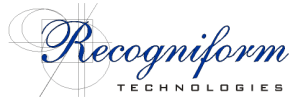4
|
|
|
|
This library allows you to convert 256 gray-levels images into monochrome ones using Dynamic Thresholding. This means that threshold value for binarizing image is not fixed but it is dynamic. It's calculated to be independent from changes both in foreground darkness and in background lightness and in illumination level. By adjusting contrast levels automatically, Dynamic Thresholding increases the accuracy of low-contrast documents containing hand-written or typed characters with variable lines thickness and darkness:
Considering these variations the system adjusts the threshold value automatically, allowing the image to preserve light foreground details and to eliminate dark background zones in a smart way. The final result is an optimal monochrome image suitable for better visualization, better compression, better optical character recognition and better automatic vectorization. No operator's intervention is required for manual threshold adjustments! With this library you can have better results than the ones reached using an image scanner with an expensive hardware board supporting dynamic thresholding. Using this software, the advantages are evident:
The library can be used by any 32 bit programming language supporting DLL: C / C++, Visual Basic, Delphi, etc... This is a sample "C" source code fragment showing how it's easy to use this library: long ProcessMyGrayDIB(long GrayDIB)
{
// Declare local variables
long Session,Error,MonoDIB;
// Init the library
Error=DT_Init("YourCompanyName","YourPassword",
&Session);
// Check if any error occurred
if (Error!=DT_OK)
{
// Perform the dynamic thresholding
Error=DT_Execute(Session, GrayDIB, &MonoDIB);
// Check if any error occurred
if (Error!=DT_OK)
{
// ==========================================
// Add here your code to use the mono image
// ==========================================
// Free the monochrome DIB handle
GlobalFree(MonoDIB);
}
// Deinitialize the library
DT_Done(Session);
}
return (Error);
}
When you need to binarize a gray-levels image, you need to select a threshold value, because gray values range is from 0 to 255: pixels lower than this value are considered background (paper) and pixels higher than this value are considered foreground (text and graphic elements). Using our software you can choose any kind of existing binarization algorithms:
Our dynamic thresholding binarization technology is also used in our new exciting product PerfectScan®, a very special TWAIN driver, and in Recogniform Interactive Zonal Thresholder. Price & Ordering Info Evaluation Version More Info
|
© 2000-2022 Recogniform Technologies SpA - All rightes reserved




